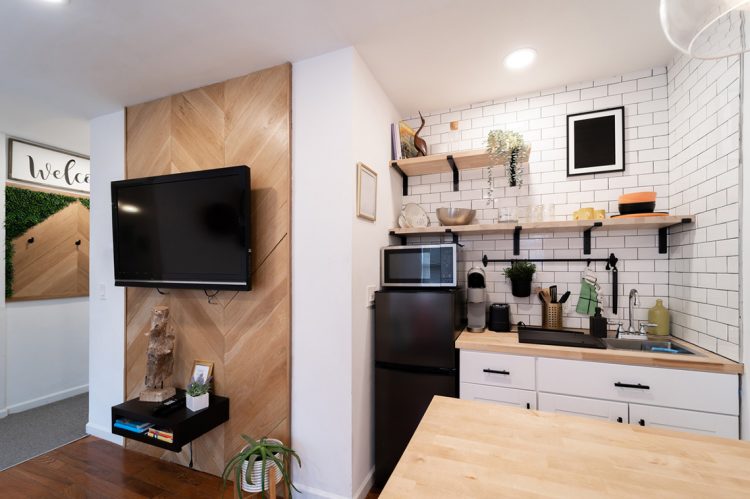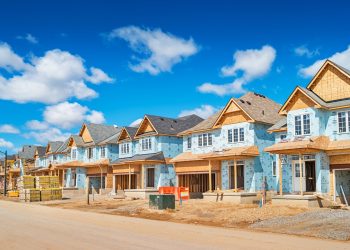The average apartment size in 2022 was 887 square feet, 54 sq ft less than the average size 10 years ago, according to a new report from RentCafe.
RentCafe’s latest report analyzed the significant changes in apartment size both nationally and in the 100 largest metros. The report found that the sharpest drop in one year was in 2022, when the average size went from 917 to 887—a difference of 30 sq ft. Additionally, studios lost 13 sq ft, 1 bedrooms lost 12 sq ft, 2 bedrooms lost 12 sq ft, and 3 bedrooms gained 15 sq ft. The share of smaller units reached a historic high of 57%—a significant change compared to 10 years ago, when they represented exactly half of apartments built.
The report also found that the average size of an apartment in the South was 993 sq ft, which means that renters in the South enjoyed an extra 106 sq ft compared to the national average. On the other hand, renters in the Pacific Northwest had the least amount of space with only 776 sq ft—111 less than the national average apartment size.
Key highlights:
- Tallahassee, Florida, was the #1 city in terms of apartment living space. At 1,182 sq ft, the city offered renters 295 extra sq ft compared to the national average—that’s the size of almost three small home offices. Compared to 10 years ago, the apartment size here has increased by 16.2%, or 191 sq ft, which is approximately the size of two small home offices.
- Following is Gainesville, Florida, with 1,105 sq ft (about 218 sq ft more than national average). That’s enough for two small home offices, which young professionals would certainly appreciate. In the last 10 years, this number increased by 11.4% or 126 sq ft.
- Mobile, Alabama, is third, where the average size of an apartment was 1,080 sq ft. This means that renters living in the Azalea City enjoyed 193 sq ft of extra space after having expanded in size by 188 sq ft or 17.4%.
- Fourth is Knoxville, Tennessee, with an average size of 1,075 sq ft. Renters in one of Tennessee’s best college towns benefited from an extra 188 of space. Compared to 10 years ago, that’s an expansion of 16.5% or 177 sq ft.
- The last of the top five is Marietta, Georgia, with an average of 1,060 sq ft of space. This offered renters an extra 173 sq ft—the equivalent of 1.5 small home offices. Compared to other cities, Marietta’s increase in size was more modest at 35 sq ft or 3.3%.
- On the other end of the spectrum, Seattle, Washington, had the smallest average apartment size at 659 sq ft. It seems that apartments in Washington’s tech hub have continued to shrink throughout the last decade, registering a decrease of 5%, or 30 sq ft, when compared to 10 years ago.
- Next up was Queens, New York, with apartments measuring 681 sq ft, 46 sq ft (or 7%) less than 10 years ago. It was accompanied by fellow NYC boroughs Brooklyn and Manhattan in the third and fifth spots, respectively, all of which offered renters the possibility of living in the city, while also staying within budget.
- Third is Brooklyn New York, where rental apartments measured 692 sq ft, which was 45 sq ft (or 7%) less than a decade ago.
- Portland, Oregon, follows at an average size of 681 sq ft, which is a 9% loss from 10 years ago.
- Fifth is Manhattan, New York, which, unlike the other boroughs, experienced a surprising increase of 19 sq ft (3%) in apartment size compared to 10 years ago. Rentals in this borough measured 740 sq ft.
Major takeaway:
“The post-pandemic apartment market has seen significant fluctuations from one year to another, including oscillations in the size of new apartments. From the need for more space in 2020 to the need for more homes in 2022, the rising demand for rentals is affecting the size of newly built apartments. Notably, last year’s decrease comes after the two pandemic years, 2020 and 2021, when the average size of new apartments actually increased. Once again, this confirmed the developers’ quick response to the need for more space during the pandemic, as they adjusted floorplans in order to accommodate large enough configurations to fit a home office,” said Adina Dragos, a creative writer at RentCafe and author of the report. “Yet, 2022 presented a different story: With one of the highest levels of construction in half a century, the year was marked by the need for more housing all across the country. As such, more studios and one-bedroom apartments were finished in 2022 than ever before.”
For the full report, click here.












